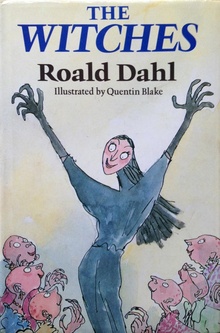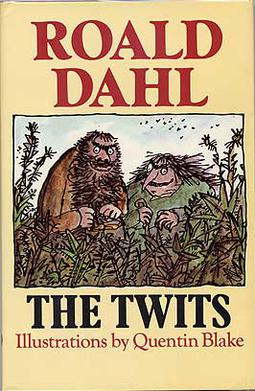Growing Characters In Our Stories
There is a saying, 'no struggle, no story,' so the characters that present in stories need a measure of conflict and tension to hold the reader's interest. As young writers grow in confidence and experience, this is a critical understanding they must develop. It can contribute greatly to the quality of the plot lines of the stories they write.
A little bit of adversity, or experiencing a problem is important for our characters. It's good for them to wrestle with a conundrum...
When characters encounter a problem or have to overcomes a hurdle, it increases their appeal to the reader. They become more relatable. More human. More fallable or imperfect. So when the writer creates a conflict for a character to grapple with, the writing is enhanced.
The writer can make that conflict happen within a character- doubt, fear, shyness. It can also be between characters- disagreement, feud, need for revenge, a perceived slight.
Sometimes the story may involve a series of critical events or obstacles that need to be overcome. It can build to a major event at the story's conclusion. One problem is overcome just before another problem arises. The story often concludes with the character triumphing over adversity.
We can assist young writers in coming to grips with matters concerning characters and plotlines. When we draw attention to the characters presented in their stories, we can assist them to create them in ways that afford them more appeal to a reader. Characters need something to do. Something to strive for. Something that needs their attention.
We can further assist them in building a greater sense of the role of characters in their stories by gathering suitable mentor texts. Highlight exemplars where the author 'shows' the character in action, attends to dialogue (both internal and external) and provides the character, or characters with a problem to resolve.
Here are a few exemplars:
 'He shivered, He shook. He sneezed. His teeth chattered. He longed for his handkerchief. He grabbed hold of his tail (it took a long frightening moment to even locate his tail, so absolute was the darkness) to have something, anything to hold on to. He considered fainting. He deemed it the only reasonable response to the situation in which he found himself, but then he remembered the words of the threadmaster: honour, courtesy, devotion and bravery.'
'He shivered, He shook. He sneezed. His teeth chattered. He longed for his handkerchief. He grabbed hold of his tail (it took a long frightening moment to even locate his tail, so absolute was the darkness) to have something, anything to hold on to. He considered fainting. He deemed it the only reasonable response to the situation in which he found himself, but then he remembered the words of the threadmaster: honour, courtesy, devotion and bravery.'
 My blood turned to ice. I began to shake all over. I glanced frantically behind me for a back door to escape through. There wasn’t one. Should I leap out from behind the screen and make a dash for the double doors? Those double doors were already closed and I could see a woman standing in front of them. She was bending forward and fixing some sort of a metal chain round the two door handles. Keep still I told myself. No one has seen you yet. There’s no reason in the world why they should come and look behind the screen. But one false move, one cough, one sneeze, one nose blow, one little sound of any sort and it won’t be just one witch that gets you. It’ll be two hundred!...'
My blood turned to ice. I began to shake all over. I glanced frantically behind me for a back door to escape through. There wasn’t one. Should I leap out from behind the screen and make a dash for the double doors? Those double doors were already closed and I could see a woman standing in front of them. She was bending forward and fixing some sort of a metal chain round the two door handles. Keep still I told myself. No one has seen you yet. There’s no reason in the world why they should come and look behind the screen. But one false move, one cough, one sneeze, one nose blow, one little sound of any sort and it won’t be just one witch that gets you. It’ll be two hundred!...'
A little bit of adversity, or experiencing a problem is important for our characters. It's good for them to wrestle with a conundrum...
When characters encounter a problem or have to overcomes a hurdle, it increases their appeal to the reader. They become more relatable. More human. More fallable or imperfect. So when the writer creates a conflict for a character to grapple with, the writing is enhanced.
The writer can make that conflict happen within a character- doubt, fear, shyness. It can also be between characters- disagreement, feud, need for revenge, a perceived slight.
Sometimes the story may involve a series of critical events or obstacles that need to be overcome. It can build to a major event at the story's conclusion. One problem is overcome just before another problem arises. The story often concludes with the character triumphing over adversity.
We can assist young writers in coming to grips with matters concerning characters and plotlines. When we draw attention to the characters presented in their stories, we can assist them to create them in ways that afford them more appeal to a reader. Characters need something to do. Something to strive for. Something that needs their attention.
We can further assist them in building a greater sense of the role of characters in their stories by gathering suitable mentor texts. Highlight exemplars where the author 'shows' the character in action, attends to dialogue (both internal and external) and provides the character, or characters with a problem to resolve.
What do you see in these texts that is like what you're trying to write?
Here are a few exemplars:
 'He shivered, He shook. He sneezed. His teeth chattered. He longed for his handkerchief. He grabbed hold of his tail (it took a long frightening moment to even locate his tail, so absolute was the darkness) to have something, anything to hold on to. He considered fainting. He deemed it the only reasonable response to the situation in which he found himself, but then he remembered the words of the threadmaster: honour, courtesy, devotion and bravery.'
'He shivered, He shook. He sneezed. His teeth chattered. He longed for his handkerchief. He grabbed hold of his tail (it took a long frightening moment to even locate his tail, so absolute was the darkness) to have something, anything to hold on to. He considered fainting. He deemed it the only reasonable response to the situation in which he found himself, but then he remembered the words of the threadmaster: honour, courtesy, devotion and bravery.'
The Tale of Despereaux,
Kate DiCamillo
*Kate DiCamillo paints a clear picture of the character's predicament and inner thoughts.
'Mr Twit was one of these very hairy men. The whole of his face except for his forehead, his eyes and his nose was covered with thick hair, The stuff even sprouted in revolting tufts out of his nostrils and ear holes.
Mr Twit felt that this hairiness made him look terrifically wise and grand. But in truth he was neither of these things. Mr Twit was a twit. He was born a twit. And now at the age of sixty, he was a bigger twit than ever.'
The Twits, Roald Dahl
*Roald Dahl provides the character with depth with an extended description of a quite unappealing person in Mr.Twit.
 My blood turned to ice. I began to shake all over. I glanced frantically behind me for a back door to escape through. There wasn’t one. Should I leap out from behind the screen and make a dash for the double doors? Those double doors were already closed and I could see a woman standing in front of them. She was bending forward and fixing some sort of a metal chain round the two door handles. Keep still I told myself. No one has seen you yet. There’s no reason in the world why they should come and look behind the screen. But one false move, one cough, one sneeze, one nose blow, one little sound of any sort and it won’t be just one witch that gets you. It’ll be two hundred!...'
My blood turned to ice. I began to shake all over. I glanced frantically behind me for a back door to escape through. There wasn’t one. Should I leap out from behind the screen and make a dash for the double doors? Those double doors were already closed and I could see a woman standing in front of them. She was bending forward and fixing some sort of a metal chain round the two door handles. Keep still I told myself. No one has seen you yet. There’s no reason in the world why they should come and look behind the screen. But one false move, one cough, one sneeze, one nose blow, one little sound of any sort and it won’t be just one witch that gets you. It’ll be two hundred!...'
The Witches, Roald Dahl
* Roald Dahl provides the reader with evidence of the character's inner turmoil.The dilemma of what action to take when confronted with a problem. He uses the craft strategy Inside/Outside to show the relationship of the physical world and the emotional world of the character.






Comments
Post a Comment